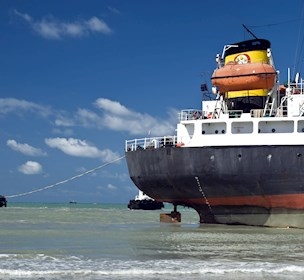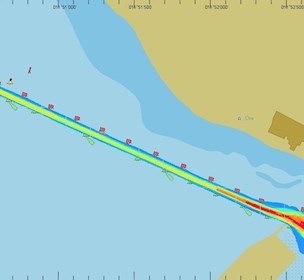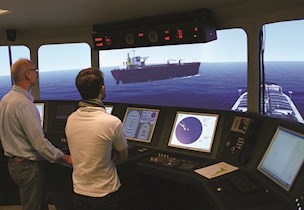Navigational risk analysis
Safety relies on the ability to identify hazards and measures to mitigate these. Risk analysis is in this context instrumental and this is where ship simulators play a vital role.
The maritime industry has traditionally turned to technology and procedure to enhance safety. This is gradually changing as the value of embracing a broader and more holistic approach to safety is emerging, which implies that safety standards in the future will focus on prevention rather than relying on accidents to drive change.
A process of a navigational risk assessment encompasses:
- identification of hazards
- assessment of the risks associated with those hazards
- application of controls to reduce the risks that are deemed intolerable
- monitoring of the effectiveness of the controls
Identification of hazards
The identification of hazards is the first and most important step in risk assessment, since all that follows depends on it. It must be complete and accurate and should be based, as far as possible, on observation of the activity/job step or through replicating the actual navigational operation on one or more simulators, involving everybody that will eventually be involved in the navigational operation.
Assessment of risk
All identified hazards possess a certain level of “risk” and this level needs to be identified. This is done through performing a risk seminar where all parties involved in the operation participate.
The identified “risk” has two components:
- the severity of the worst probable consequences, if the hazard is realised and,
- the likelihood of the hazard to be realised
The application of controls and monitoring the effectiveness
When the level of risk has been decided by the RA-team, the team will describe what existing effective control measures are in place and suggest what additional control measures are needed to minimise the risk and lower it to ALARP (As Low As Reasonable Practicable). After control measures have been suggested, a new risk ranking is made to determine any residual risks.
The value of simulating
Simulators have been used within the maritime world for decades, both for engineering and training purposes. Their ability to test the consequences of what will happen if a project is implemented is instrumental in reaching and making the right decisions. The value of the decisions lies in screening various solutions and quantifying the risk.





